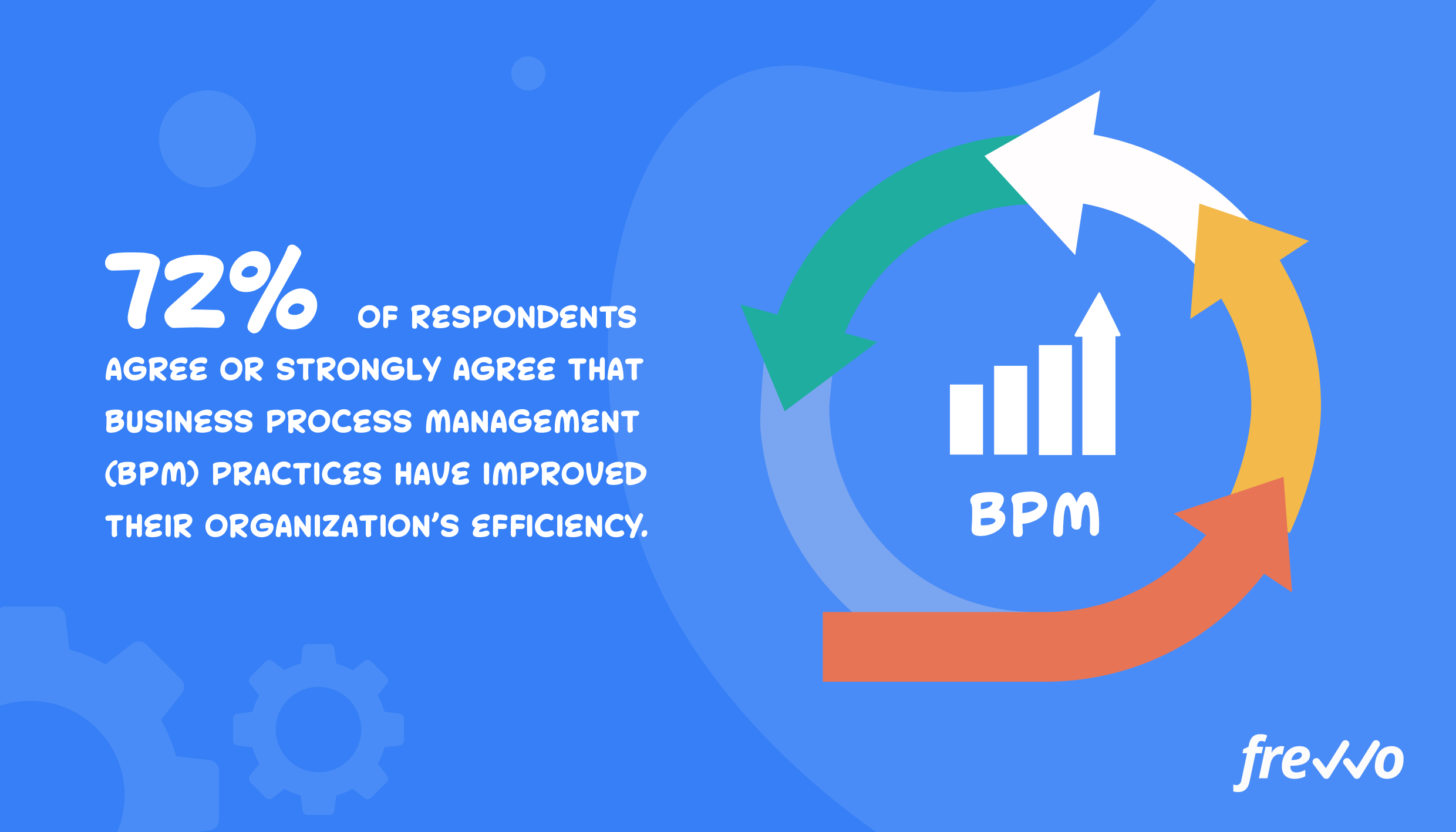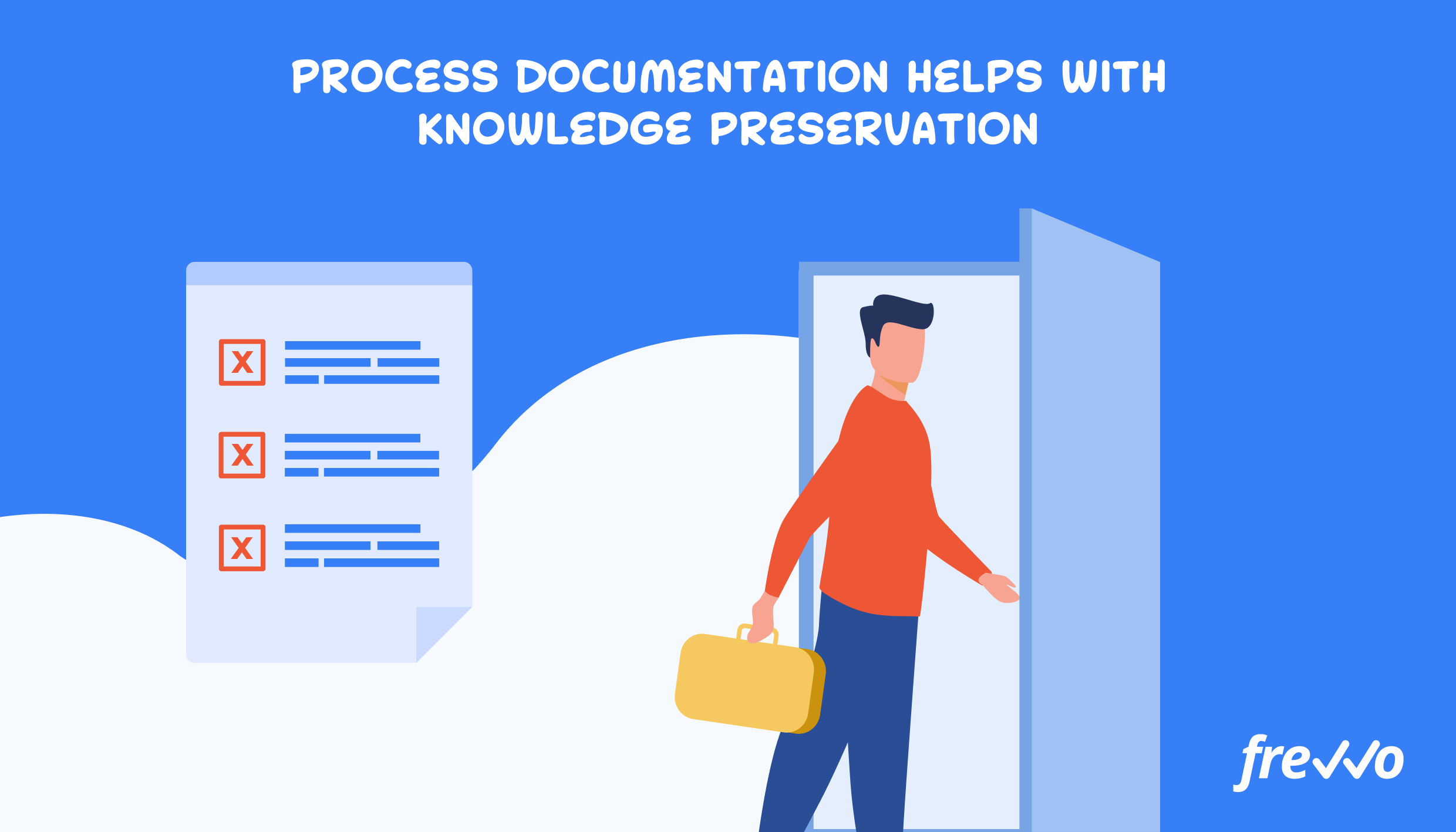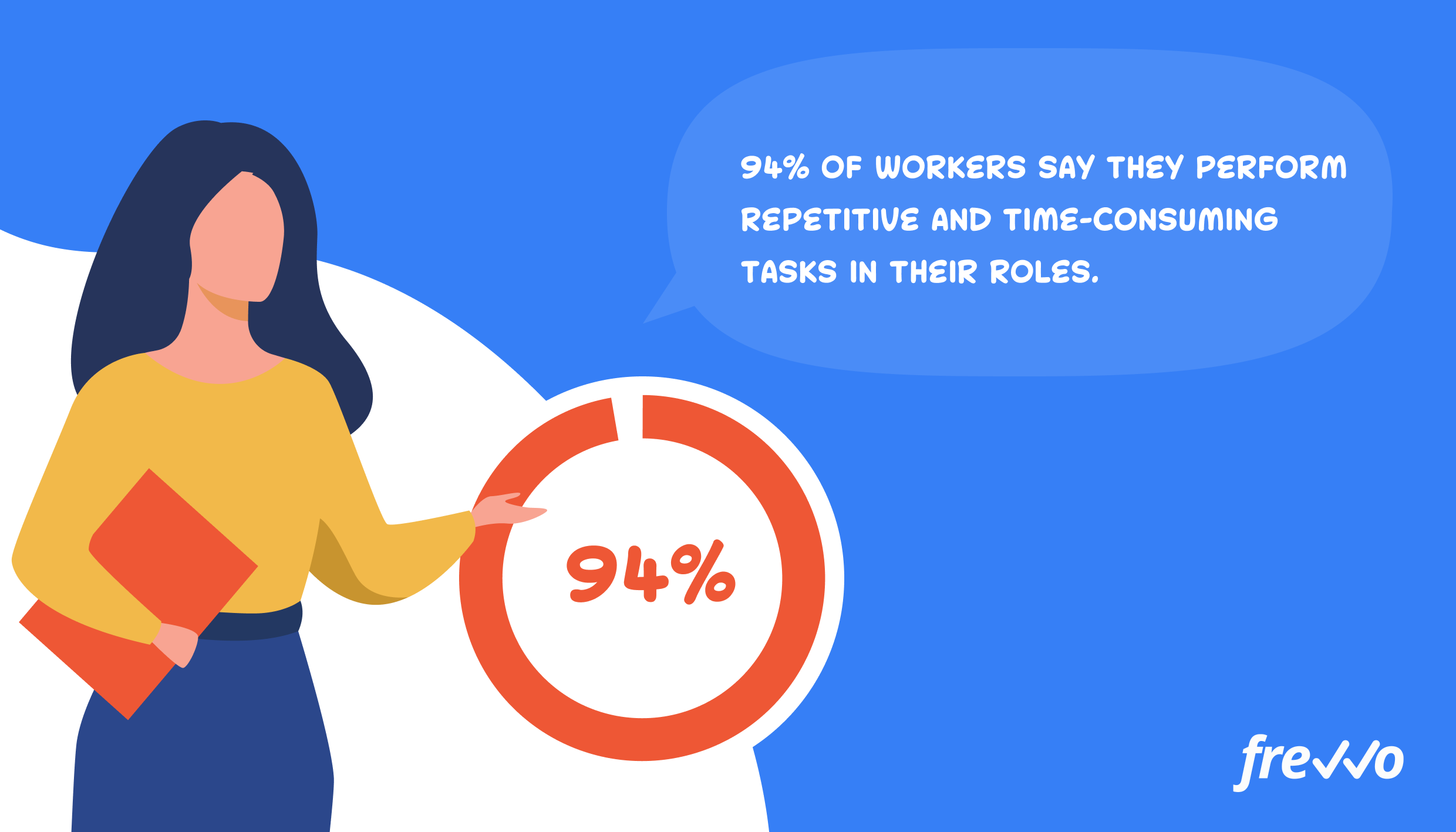Processes are at the heart of every organization. But things become more complex as a business grows and expands.
What may have previously worked for your organization is likely slowing down how things get done now. This impacts overall productivity and leads to inconsistent outcomes.
So what’s the best way to manage the growing complexity of processes? And how can you ensure processes are running as efficiently as possible?
The answer is with process documentation.
In this article, we’ll look at how to document a process, why it’s important, and best practices to follow. We’ll also look at the tools you can use to document and automate your processes.
Use the links below to navigate to the section you want to learn more about:
- What Is Business Process Documentation?
- Why Is It Important to Document Processes?
- How to Document a Process
- Process Documentation Best Practices
What Is Business Process Documentation?
Let’s start by defining a “process.”
A process is a series of steps that you follow to achieve a specific goal — onboarding new hires, fulfilling customer orders, approving expense claims, etc.
These processes typically follow the same steps as they move from one step to the next. They also focus on achieving a key business goal.
Business process documentation is a step-by-step description that details how to execute a process. It includes resources that support a process such as policies, checklists, forms, and links to relevant applications.
Process documentation doesn’t exactly sound appealing. But 69% of companies are now turning to process work as a way to reduce costs and improve productivity.
Documenting a process allows you to map out the ideal way of doing something, whether it’s approving an invoice or procuring goods.
Process documentation typically involves the following individuals:
- Project team: The project team is responsible for documenting a process. However, it’s helpful to designate someone not involved in the process to own its documentation. That way, they can focus on recording processes.
- Stakeholders: Stakeholders are those who are directly involved in a process and its documentation.
- Outsiders: Outsiders can provide a new and unbiased perspective on ways to improve an existing process.
Each individual contributes to ensuring that all processes are properly documented and maintained.
Why Is It Important to Document Processes?
Documenting a process is undoubtedly time-consuming, but it offers numerous benefits for your organization. Here are a few reasons it’s important to document processes.
Improves Business Processes
More companies are documenting their processes because it facilitates process improvement.
Breaking down a process into individual steps helps you establish its current state. From there, you can identify bottlenecks and take steps to address them. This could mean using automation tools or removing certain steps altogether.
72% of respondents agree or strongly agree that business process management (BPM) practices have improved their organization’s efficiency.

Check out this case study of how Yves Rocher automated its onboarding process.
Previously, the company relied on a paper-based process to onboard employees. But this often led to delays whenever employees used an outdated form or filled out the wrong information.
To address these issues, Yves Rocher turned to frevvo’s automated workflow solution. Custom workflows routed forms to the right departments and allowed for corrections at any point if there were any errors.
Helps Train New Hires
New hires don’t just hit the ground running on the first day. It can take months or even longer until they feel comfortable in their roles.
Process documentation facilitates employee training. If something is unclear, a new employee can refer to a specific process document instead of trying to figure it out on their own (and performing a task in a way they shouldn’t).
It’s not just new hires that benefit from documented processes. Like pilots who refer to preflight checklists before takeoff, experienced employees can reference documents to make sure they don’t miss anything important.
Preserves Company Knowledge
Employees become more efficient in their roles to the point of becoming subject matter experts. But your organization is at risk of losing valuable information if an employee leaves without sharing what they know.

54% of respondents in one survey said their company didn’t have a process for preserving knowledge when employees leave.
Process documentation helps with knowledge preservation. It creates a system where employees can share their knowledge with others.
If an employee takes an opportunity elsewhere, current employees and new hires can still access the information they previously shared.
Ensures Compliance
Process documentation can help ensure that employees are adhering to internal policies.
Travel and expense (T&E) policies are important because they establish rules for filing and claiming expenses that employees incur. They also help organizations keep track of spending.
But non-compliance and expense fraud are likely to occur if these processes aren’t clearly documented. 68% of finance leaders aren’t confident that employees comply with T&E policies.
One of the best ways to ensure compliance with policies like expense claims is with documented processes. Employees can refer to the relevant documents to check what items are covered before submitting their claim.
A process document combined with workflow software like frevvo also helps you maintain accurate records and it creates an audit trail you can review.
Now let’s look at how to get started with process documentation.
How to Document a Process
Documenting a process may not sound appealing. But well-documented processes ensure that employees complete their tasks to the same standard each time.
Follow these steps to document a process and identify areas of improvement.
Step 1: Identify a Process
Your organization likely has dozens, if not hundreds, of processes. Choose just one process first to avoid becoming overwhelmed.
Start by asking yourself these questions:
- What processes do employees follow the most?
- What processes follow the same steps from start to finish?
- What processes could deliver a higher ROI if they’re documented?
- What processes are tied to a key business goal?
Answering these questions should help you narrow down a process to document. Then give your process a name and include a short process description.
Step 2: Define Process Boundaries
Processes typically have clear start and end points. What triggers a process to start? And what determines when it ends?
Clearly define these boundaries before you start outlined each of the process steps.
Step 3: Identify the Process Outputs
Process outputs are the results that you can expect from a completed process. They help you measure and evaluate a process.
For example, if your company does graphic design, a process output might be approvals for final custom logos. But if clients are rejecting your designs at a high rate, this indicates you may need to revisit your process.
Step 4: Identify the Process Inputs
Process inputs are the resources that employees need to carry out each step. You should also define where any relevant data comes from (e.g., databases, spreadsheets, consultants, etc.).
Step 5: List Out the Process Activities
Process activities define what happens at each step from start to finish. List these steps in a “verb” format to make them actionable.
Here are some examples:
- Fill out purchase order form
- Sign and approve expense claims
- Generate payroll reports
- Pay invoices
If you think you may have missed something, it helps to get input from a key stakeholder or anyone directly involved in a process.
Step 6: Visualize the Process
Now that you listed out the process activities for each step, the next step is to put them in the correct sequence to create your workflow.
Using a workflow designer is useful here. With frevvo’s workflow automation tool, you can use simple drag-and-drop tools to help with process mapping.
Here’s an example of a workflow for invoice approvals:

Here you can add or remove steps as needed.
To make your workflows more efficient, you can even add conditional rules. For example, having a CFO review every contractor invoice can result in a backlog of work.
In frevvo, you can add a conditional rule that routes invoices above a certain value to a CFO for review before issuing payment. It’s a seemingly small change, but it’s one that can improve your processes and your bottom line.
Step 7: Assign Roles
Assign roles for each step. Be sure to detail exactly what each individual is responsible for to avoid any confusion or misunderstandings.
Step 8: Document Review
Gather everyone involved to review and approve the documented process. Are there any steps or details missing? Is everything in the right order?
Run through the process yourself or bring on a subject matter expert. This should be someone outside your organization, so they can provide their unbiased feedback.
Here’s what our process document looks like:
- Name: Expense Claims Process. For employees to submit claims and receive reimbursement in a timely manner.
- Boundaries: Starts when an employee fills out an expense claim form and ends when accounting systems are updated.
- Outputs: A process for expense claims keeps track of employee spending, which helps company finance managers manage cash flow and prevent instances of fraud.
- Inputs: Receipts, bank account records, expense claim form, etc.
- Activities: Gather receipts for company expenses, fill out and submit an expense claim for approval, review expense claim and approve/reject, reimburse employees, etc.
- Roles: Employee, manager, accounting manager
Before you roll out your documented processes, let’s look at some best practices you should follow.
Process Documentation Best Practices
Follow these best practices to get the most out of business process documentation.
Keep it Simple
Keep the process document plain and simple. That means writing in a way that employees can understand without having to ask for clarification.
While your documents should be technically accurate, you’ll want to avoid using jargon or overly complex terms. Get straight to the point and only provide what’s necessary.
Store Documents in a Central Location
Employees spend 5 hours a week waiting to get in touch with people who have the information they need to do their jobs.

Documented processes allow for more efficient knowledge sharing. But you need to store them in a central location where employees can access and share the resources they need.
Create Interactive Learning Materials
Complement your documented learning processes with more learning materials. Examples include creating videos that demonstrate a process and allow users to interact with the content.
It may seem like extra work, but consider the fact that 72% of employees say that interactive videos hold their attention for longer.
Implement a Knowledge Transfer Plan
Knowledge loss occurs when companies don’t have a system in place for employees to share what they know before they leave. This is why it’s important to create a knowledge transfer plan and establish a system for employees to share their knowledge.
Regular Review Your Processes
Processes become outdated over time. Make it a point to regularly revisit your processes to ensure they’re still running efficiently.
Setting Key Performance Indicators (KPIs) is a good way to help you measure and evaluate your processes — average cycle times to process purchase orders, for example.
Maintain Separate Versions
If you update a process, make sure that everyone has the latest version. Document control is also important in case you need to revert a document back to a previous version.
Use BPM Software
Employees today are frequently bogged down by mundane work. In fact, 94% of workers say they perform repetitive and time-consuming tasks in their roles.

As you document your processes, you may discover that some activities can be streamlined or even automated altogether. Examples include filling out forms and routing documents to a manager for approval.
With BPM software, you can automate processes and reduce the time that employees spend on manual tasks. This allows employees to focus on high-priority tasks.
Conclusion
Companies are composed of interrelated processes that must work together to deliver consistent outcomes. Breakdowns are likely to occur if these processes aren’t documented.
Well-documented processes offer numerous benefits — they help improve productivity, preserve company knowledge, and ensure compliance, just to name a few.
Instead of mapping processes by hand, you can use frevvo to document, manage, and automate any business process with its intuitive visual tools.
Try frevvo free for 30 days to make your documented processes even more powerful.

